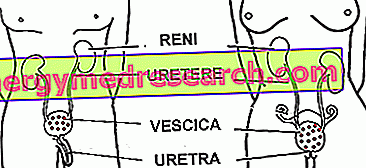Related articles: Deep vein thrombosis
Definition
Phlebothrombosis, or deep vein thrombosis, is a condition in which a vein becomes blocked due to the presence of a blood clot (thrombus), without the prior inflammation of its wall. Deep vein thrombosis is a very serious condition, as this thrombus can rupture and be pushed from the blood to the lungs. At this level, the obstructive process that is formed determines a potentially lethal condition known as pulmonary embolism; fortunately this event occurs only in a small percentage of cases.Most common symptoms and signs *
- Swollen arms
- Swollen ankles
- Night Cramps
- Muscle cramps
- Foot pain
- Edema
- erythromelalgia
- Tingling in the legs
- Sore legs
- Swollen legs
- Legs tired, heavy legs
- Lymphedema
- Swollen and tired feet
- Leg itch
- Skin Ulcers
Further indications
About half of patients with deep vein thrombosis do not experience any particular symptoms; when present, they include pain, edema (swelling), redness, a sense of warmth and dilatation of the superficial veins, and are located at the affected extremities. These symptoms are generally located in the legs and ankles; more rarely in the neck and arms. The pivotal symptoms of pulmonary embolism include severe chest pain, accompanied by difficulty breathing, dizziness and coughing blood.



